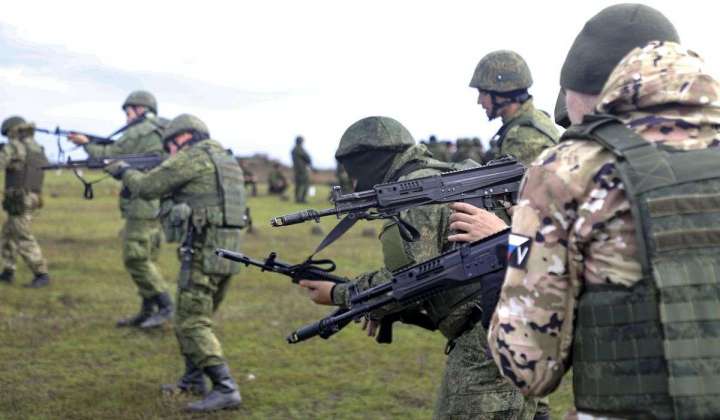Rich Russians spared as Putin sends poor, ethnic minorities to front lines in Ukraine

Russian President Vladimir Putin is insulating wealthy urban families from the carnage in Ukraine, Western intelligence analysts said Sunday, with the Kremlin instead sending poor Russians and ethnic minorities to the front lines of an increasingly bloody war.
Most estimates put Russian casualties at more than 200,000 in the 13-month conflict. Casualties mounted over the weekend in Bakhmut, where Russian and Ukrainian forces are locked in a fierce fight for control of the strategically vital city.
As Russian losses grow, observers say the Kremlin seems to have made it a priority to shield the country’s affluent urban centers from the death and destruction.
Political specialists say the tactic also carries direct personal benefits for Mr. Putin, as it helps tamp down frustration and war-weariness among the rich, powerful Russian elites who might be capable of challenging his grip on power.
Specifically, British intelligence analysts say the Kremlin has largely avoided drawing its front-line forces from Moscow and Saint Petersburg, Russia’s wealthiest and largest cities.
“As Russia continues to suffer extremely heavy casualties, the impact varies dramatically across Russia’s regions. In proportion to the size of their population, the richest cities of Moscow and St. Petersburg have been left relatively unscathed,” the British Ministry of Defense said in a series of Twitter posts Sunday.
SEE ALSO: Wagner Group steps up recruitment efforts throughout Russia
“This is especially true for the families of the country’s elite,” the posts continued. “In many of the Eastern regions, deaths are likely running, as a percentage of population, at a rate 30+ times higher than in Moscow. In places, ethnic minorities take the biggest hit; in Astrakhan some 75% of casualties come from the minority Kazakh and Tartar populations. As the Russian [Ministry of Defense] seeks to address its continued deficit of combat personnel, insulating the better-off and more influential elements of Russian society will highly likely remain a major consideration.”
Analysts say the effort also extends to specific families, as most high-ranking Russian government officials are not known to have children currently fighting in the Ukraine war.
The politically savvy Mr. Putin appears to want front-line forces from regions and families with little influence over the government or much social sway.
“They’re not coming from Moscow and Saint Petersburg. They’re coming from the really marginalized, isolated republics,” Timothy Frye, a professor of post-Soviet politics at Columbia University, said at a recent event hosted by the Center for a New American Security, a Washington-based think tank.
“In a classic, personalistic dictator sense of skewing policies to benefit the urban groups that might threaten political stability more, Putin has played that card well,” Mr. Frye said.
But the tactic may not work forever.
“It will also take time for the casualties to really register to the point where Russians are one or two degrees of separation away from somebody who has been killed [in Ukraine], rather than two or three degrees of separation,” Mr. Frye said.
Anger and frustration are growing in some corners of Russian society, despite Mr. Putin’s best efforts to insulate the country from what’s happening on the ground in Ukraine.
A group of Russian women over the weekend posted a video to Telegram calling on Mr. Putin to stop sending their sons and husbands “to the slaughter” in Ukraine.
The women said their family members are being assigned to front-line assault groups without adequate training.
“They are prepared to serve their homeland, but according to the specialization they’ve trained for, not as stormtroopers. We ask that you pull back our guys from the line of contact and provide the artillerymen with artillery and ammunition,” one woman says in the video, according to English-language media reports.
Russian casualties are hitting historic levels. Russian troops are being killed at a monthly rate of at least 25 times the number killed in Chechnya and 35 times the number killed in Afghanistan, according to the Center for Strategic and International Studies.
According to CSIS, Russia lost 14,000 to 16,000 troops in Afghanistan from 1979 to 1989 and between 12,000 and 25,000 soldiers in Chechnya. The think tank estimates that 60,000 to 70,000 Russian troops have been killed in Ukraine since the war began in February 2022.
Well over 100,000 Russian troops have been wounded in Ukraine as well, according to most estimates, putting the total casualty figure over 200,000.
• Mike Glenn contributed to this report.






